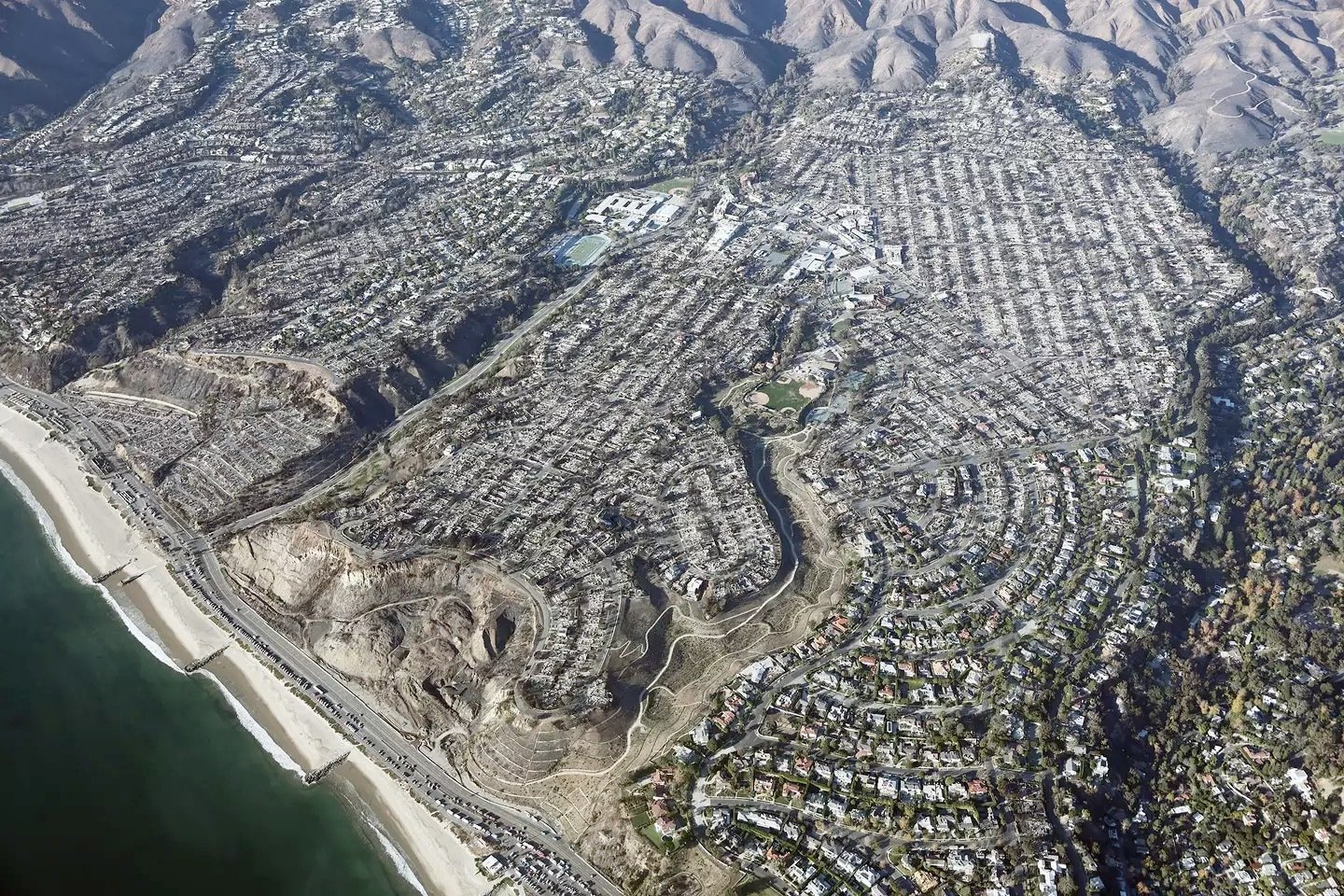FIRE SAFE DESIGN AND CONSTRUCTION IN THE AGE OF CLIMATE CRISIS
My heart is with everyone affected by the recent fires in Los Angeles. As climate change intensifies, wildfires are becoming more severe, and our buildings and communities are vulnerable to the impacts. I have friends, family, and projects who were endangered by these fires, so this topic is real and personal to me.
With that in mind, I wanted to share some thoughts about how architects can help mitigate these risks, as well as some of the things we’re doing at LLA to prepare for a future of rising temperatures, prolonged droughts, and changing weather patterns that are expanding wildfire risk zones beyond traditional high-risk areas. Building in a fire-safe manner, whether new construction or updating an existing home, is critically important to help mitigate these risks and protect your family and property.
The good news is that there are many things we can do and are doing to improve the fire-hardening of our homes and projects. It might come as a surprise that most buildings that burn in wildfires aren’t consumed by a wall of flames. Instead, they most often burn from the inside out. This is because wind-blown embers enter the building through vents, are trapped in unprotected eaves, or find other ways inside, where they typically encounter unprotected wood and other highly flammable materials. Homes that do ignite through contact with flames most often do so because the neighboring house has caught fire, so one house protected is more than one house saved- it can break the chain of fires and help stop the spread of the fire.
Knowing this, there are many things we can do to make our homes, and in turn our neighbors, safer. Class A fire-rated roofing (metal, tile, or composite), Non-combustible siding materials like cement board and stucco, heat-resistant dual-pane tempered glass for higher temperature tolerance, enclosed eave construction, and fine metal mesh screening for all vents are just a few of the many ways we can design fire-hardening into a new home or update an existing home to be better protected.
The exterior environment around the house also plays a big role in keeping the house safe from an approaching fire. Fire-resistant decking materials and a defensible space of non-combustible materials within five feet of the house ensure there are no easily ignited materials around the perimeter of the home. Planting native, drought-tolerant, and fire-resistant vegetation in the zones beyond is also important. In many places in California, this can mean tough choices about removing mature, non-native species of trees and plants, but the long-term benefits in terms of reduced water use, habitat preservation for native species, and contributing to the restoration of the natural, native California environment are worthy causes that can also increase the enjoyment and value of your property.
The risks of wildfires extend outside of the actual fire zone. One that has been often overlooked is the effect of poor air quality even hundreds of miles away. The concept of the smoke-tight building is something that should also be considered when thinking about how best to ensure a healthy indoor environment. Current California codes dictate a level of building envelope (walls, doors, windows, etc.) air-tightness that allows a significant amount of outside air in unintentionally. In order to better control the air we breathe indoors, the building envelope must be properly sealed, and filtered mechanical ventilation introduced. Me and my staff were recently certified as Passive House (PH) designers, in part to address these concerns. Passive House construction creates an air-tight building envelope and provides a precise quantity of filtered mechanical ventilation to maintain ideal air quality inside the house. PH was originally developed for comfort and energy efficiency, but the additional air-quality benefits are adding yet another reason to build to the PH standard.
As climate change reshapes our environment, wildfire-safe construction must evolve to meet these new challenges. Building with both current and future climate conditions in mind is essential for creating truly resilient homes in our warming world. Building codes are beginning to address this, but there is much more that can be done to mitigate risks and reduce the health impacts of wildfires to our homes and ourselves.
Please reach out if you’re considering a new project or re-build that includes fire-hardening and/or health concerns and let’s discuss this in more detail. Stay safe out there!

